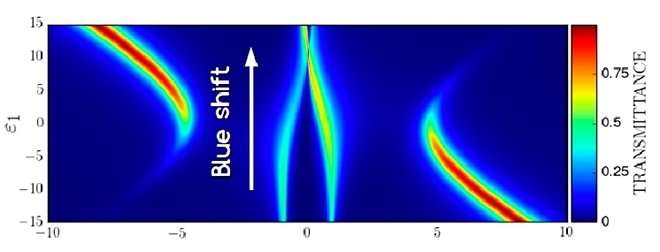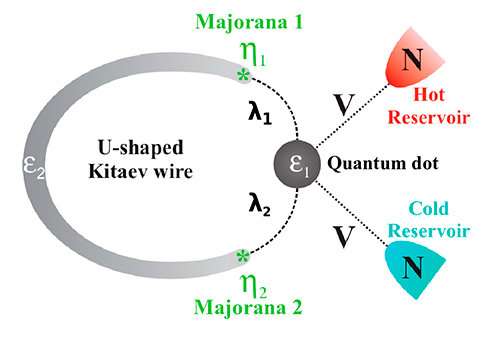Thermoelectric nanodevice based on Majorana fermions is proposed

In March 1938, the young Italian physicist Ettore Majorana disappeared mysteriously, leaving his country's scientific community shaken. The episode remains unexplained, despite Leonardo Scascia's attempt to unravel the enigma in his book The Disappearance of Majorana (1975).
Majorana, whom Enrico Fermi called a genius of Isaac Newton's stature, vanished a year after making his main contribution to science. In 1937, when he was only 30, Majorana hypothesized a particle that is its own anti-particle and suggested that it might be the neutrino, whose existence had recently been predicted by Fermi and Wolfgang Pauli.
Eight decades later, Majorana fermions, or simply majoranas, are among the objects most studied by physicists. In addition to neutrinos—whose nature, whether or not they are majoranas, is one of the investigative goals of the mega-experiment Dune—another class not of fundamental particles but of quasi-particles or apparent particles has been investigated in the field of condensed matter. These Majorana quasi-particles can emerge as excitations in topological superconductors.
A new study by Ph.D. student Luciano Henrique Siliano Ricco and his supervisor Antonio Carlos Ferreira Seridonio and others, was conducted on the Ilha Solteira campus of São Paulo State University (UNESP) in Brazil and published in Scientific Reports.

"We propose a theoretical device that acts as a thermoelectric tuner—a tuner of heat and charge—assisted by Majorana fermions," Seridonio said. The device consists of a quantum dot (QD), represented in figure A by the symbol ε1. QDs are often called "artificial atoms." In this case, the QD is located between two metallic leads at different temperatures.
The temperature difference allows thermal energy to flow across the QD. A quasi-one-dimensional superconducting wire—called a Kitaev wire after Russian physicist Alexei Kitaev, currently a professor at the California Institute of Technology (Caltech) in the U.S.—is connected to the QD.
In this study, the Kitaev wire was ring- or U-shaped and had two majoranas (η1 and η2) at its edges. The majoranas emerge as excitations characterized by zero-energy modes.

"When the QD is coupled to only one side of the wire, the system behaves resonantly with regard to electrical and thermal conductance. In other words, it behaves like a thermoelectric filter," Seridonio said. "I should stress that this behavior as a filter for thermal and electrical energy occurs when the two majoranas 'see' each other via the wire, but only one of them 'sees' the QD in the connection."
Another possibility investigated by the researchers involved making the QD "see" the two majoranas at the same time by connecting it to both ends of the Kitaev wire.
"By making the QD 'see' more of η1 or η2, i.e., by varying the system's asymmetry, we can use the artificial atom as a tuner, where the thermal or electrical energy that flows through it is redshifted or blueshifted," Seridonio said (see figure B).
This theoretical paper, he added, is expected to contribute to the development of thermoelectric devices based on Majorana fermions.
More information: L. S. Ricco et al, Tuning of heat and charge transport by Majorana fermions, Scientific Reports (2018). DOI: 10.1038/s41598-018-21180-9
Journal information: Scientific Reports
Provided by FAPESP




















